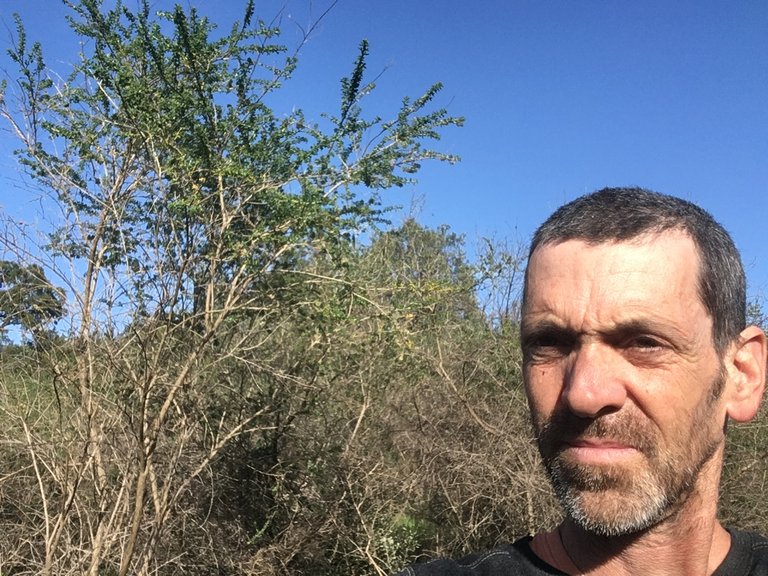
many of our pioneer plants thrive to a point that they seem small trees. as seen in the photo, many are way taller than me.
**
Before we can start to discuss succession, we need to establish what are Pioneer Plants and the role they play in it.
Pioneer plants are those that are capable of growing in a given area before any other plant. they can only thrive in full sun and are very hardy in general, being able to establish themselves in harsh conditions like lack of shade, exposure to winds, lack of humidity and very pure soil.
these plants later create favorable conditions for other, more delicate plants to follow. they can be the first ones to establish after fire or any other type of soil degradation.
pioneer plants are an important asset to have for those who want to transform their land into a forest / food forest as they can be used as a base for those.
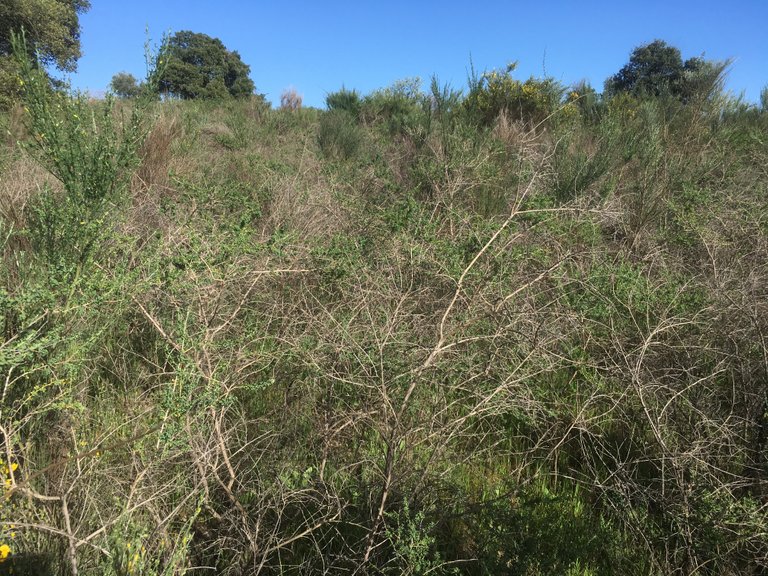
about half of the farm is in a shrub state, most of which is being used to establish both native and fruit trees
**
now that we have established what pioneer plants are, let us examine what an Ecological Succession actually mean.
It is a natural process of the evolution of a terrain from being poor and exposed into one covered with shrub and eventually into a forest.
this is a natural process and can take many years.
many factors effect the speed in which succession would take place, like the local climate, soil type, solar exposure, local vegetation and so on.
succession takes different forms in different climates and in this post I will discuss succession as we observe it here in Central Portugal.
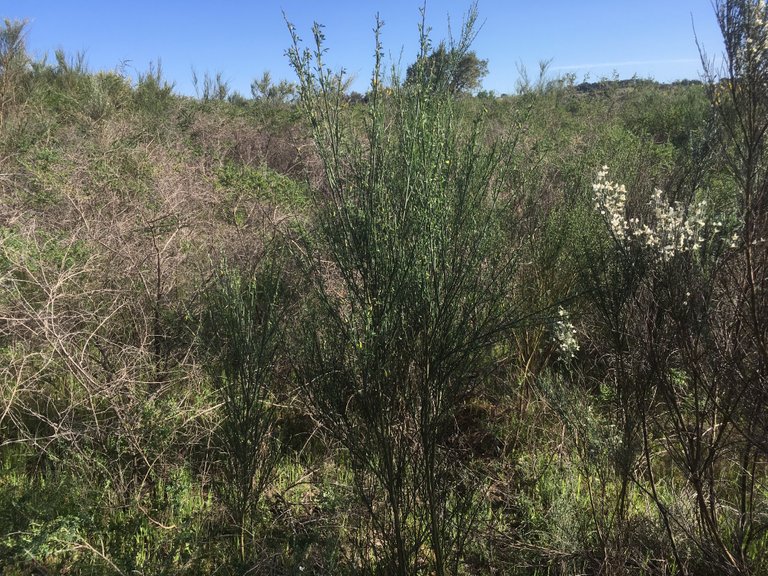
our shrub is made up almost entirely of 3 plants:
White Broom (Cytisus multiflorus)
Yellow Broom (Cytisus striatus)
and
Adenocarpus complicatus
all three are very wide spread pioneer plants in our region. they are all of the same family (Fabaceae) and they all fix Nitrogen into the soil around their roots that other plants can then take advantage of for their own growth.
**
our local climate is called continental mediterranean. it is characterized by long dry summers with high temperatures and a short, cold wet season.
annual rain fall averages between 600-800mm, often much less. drier years show direct correlation with devastating wildfires. temperatures can range between -7C to 47C
solar radiation peaks at 11 UV typically between mid May and the end of August (11 UV is considered extreme and it is due to the lack of pollution in the air in our area)
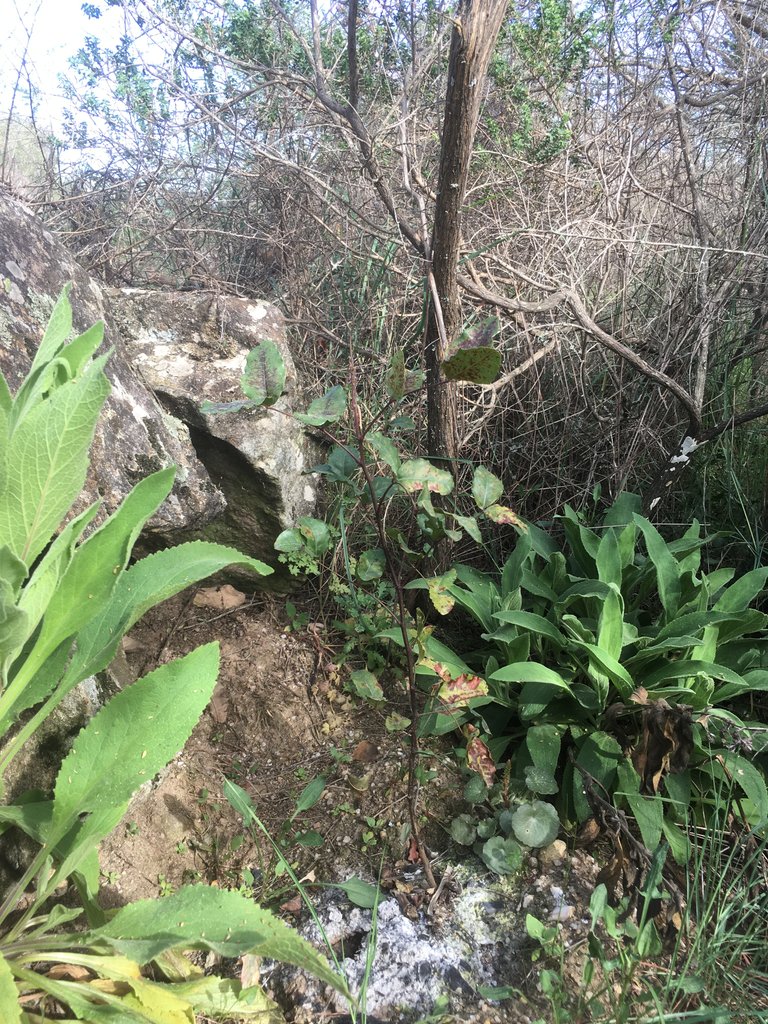
a young Carob tree being established under the shrub where it is protected from our severe frosts
a common practice we see around us is when people raze the shrub to the ground, leaving the soil bare and exposed, this is done to achieve a "clean slate" to be able to work with.
now, try to imagine a soft seedling planted on such bare land. it is exposed to wind that also dries the soil further, it is exposed to direct sun and its radiation all day long, the soil around it is literally dead as no bacteria can survive in it and there are no other roots systems present to hold the soil together in extreme rain events.
it becomes close to impossible to establish a plant in such conditions without having to have it on artificial "life support". success rates from planting events can be as low as 5 or 10% depending on the year, but overall, very low.
on the other hand, one can work with nature for much better results and actually accelerate succession in doing so.
the many benefits of working (planting and sawing) with an establish shrub include:
· wind breaking
· shade
· humidity
· protection from wildlife (boars, rodents etc.)
· organic material
· Nitrogen
· Mycelium
· frost
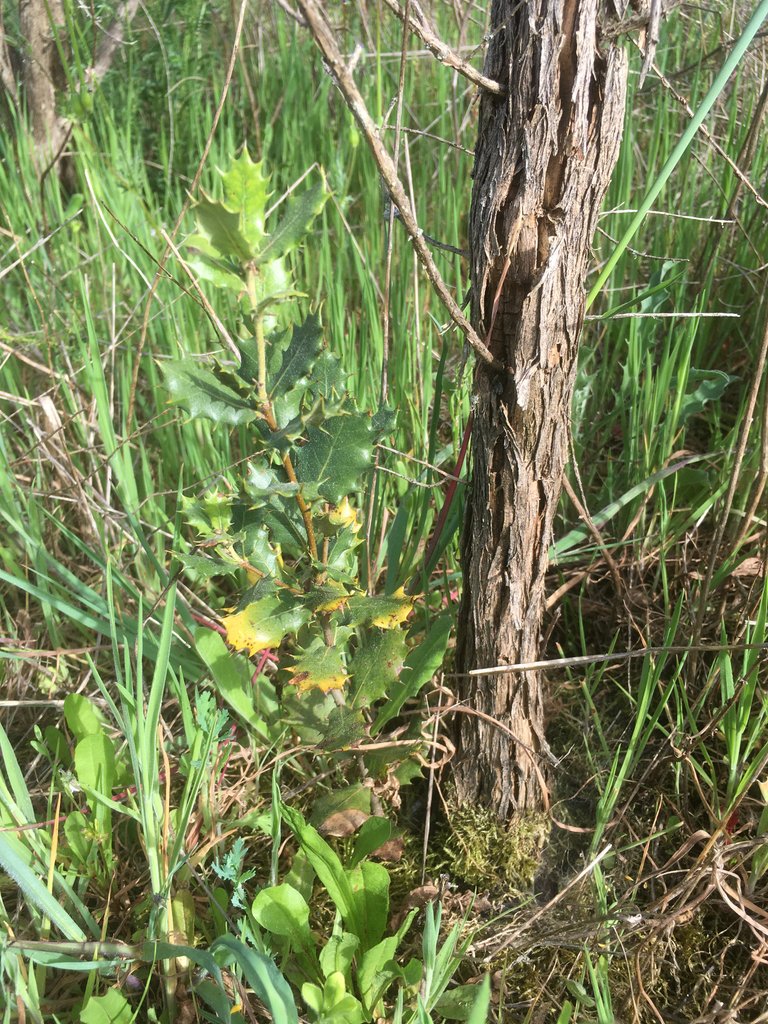
Holm Oak (Quercus Ilex) grew from a sawn acorn that was placed in a way that did not allow boars to dig it out.
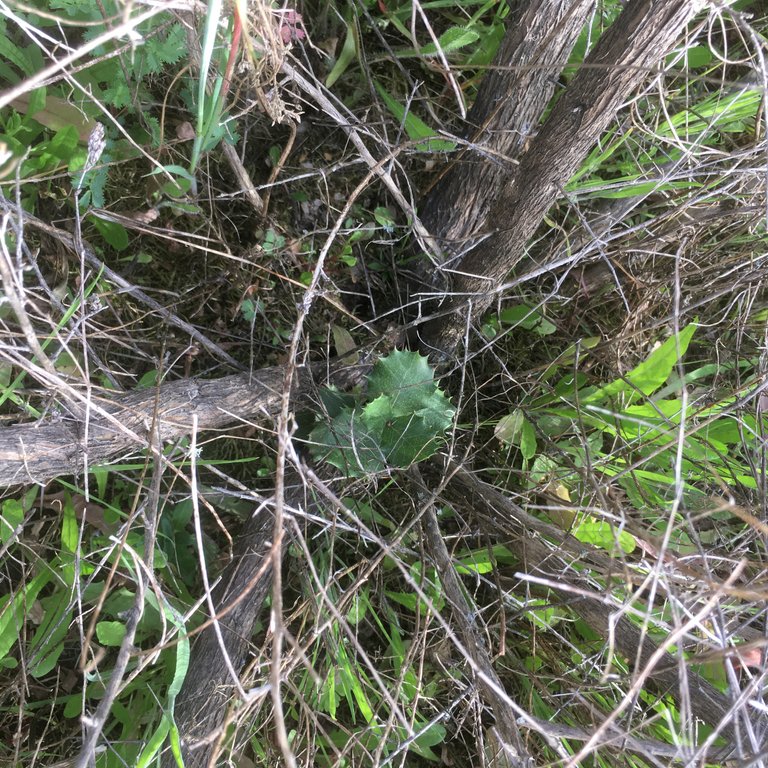
and top view of another that was sawn smack in the middle, totally out of their reach.
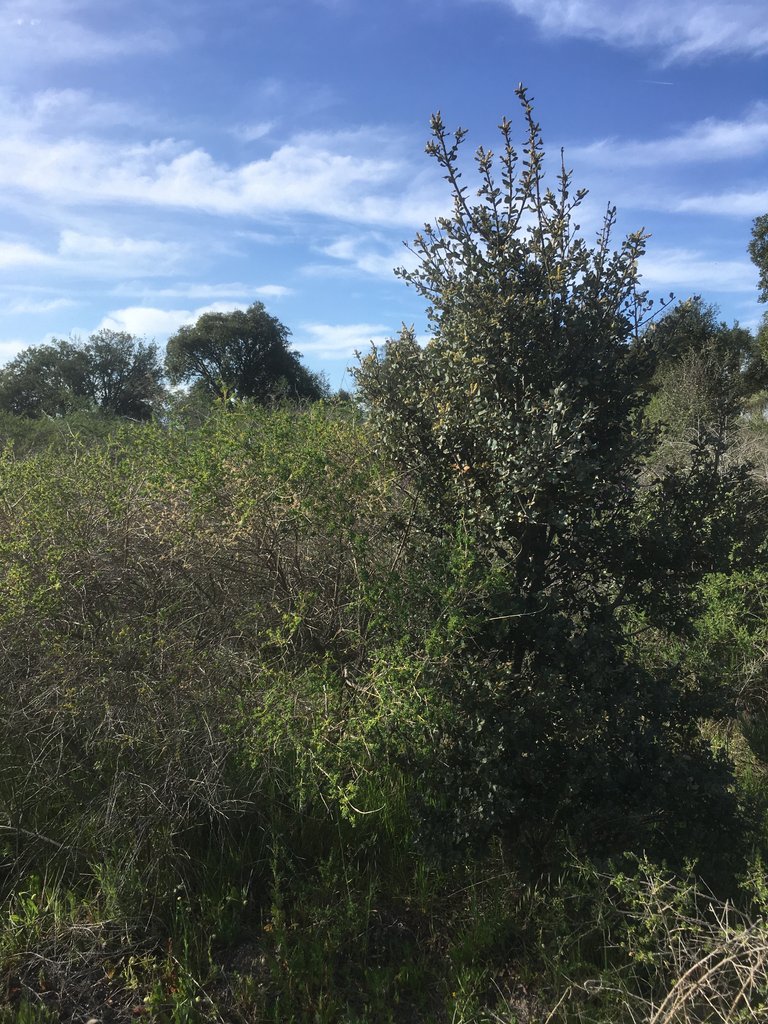
our oldest one is now taller than the surrounding pioneer plants. as soon as it creates too much shade they will no longer be able to thrive and eventually die off.
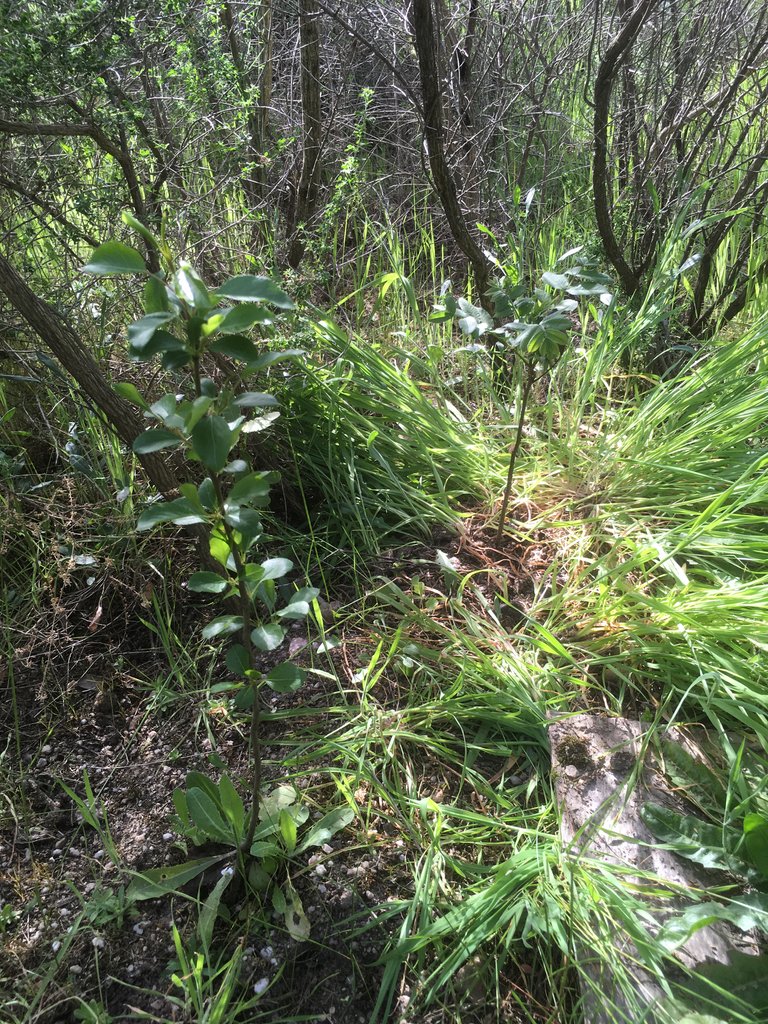
an Apple tree and a Pecan. making their way up faster due to the competition they have with the larger plants around them. the Pecans suffer from leaf burns due to our intensive solar radiation in their first year of life and hence have to have some protection.
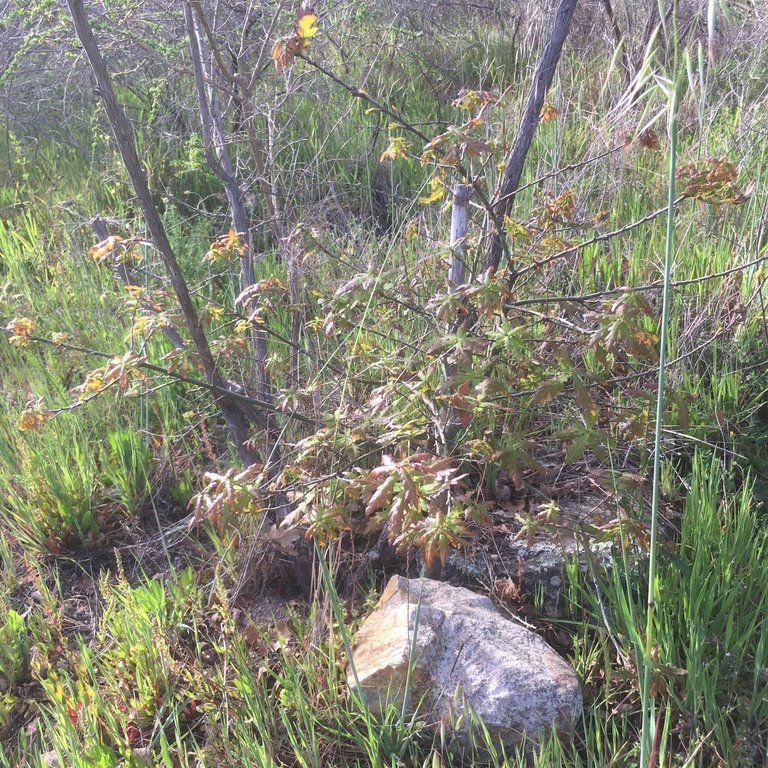
Pedunculate Oak (Quercus robur), a native, now well established in the shade of the shrub. many of the smaller plants are sawn or planted to the East of the bigger plants, hence allowing them to be shaded in the hottest afternoon hours in Summer.
**
I am daily making the change I want to see in the world.
If you enjoyed this post please upvote and reHive.
thank you for stopping by.
#UnityTowardFreedom
#PlantPower(Vegan)
#NaturalMedicine
#AbundanceTribe
#AmazingNature
#Homesteading
#ProofofBrain
#HiveGarden
#ecoTrain
#HiveDiy
#Palnet
#OCD
Gosh, I wish I'd read this years ago! My front garden could have done with this approach. I've ended up approaching it this way eventuality anyway, by keeping some of the established shrubs to help shade the wanted plants until they establish themselves. Some nitrogen fixers would be a good idea, though.
As I have learned by observation and trial and error here, plants could use any bit of help we can give them. on top of all that is being discussed in the post, they are now all treated with Mycorrhiza as well before being planted. plants that are already in the ground also get a boost using the above. results over time speak for themselves. success rates are over 85%-90% in years that there are no extreme draught.
thank you for stopping by 🙏
Any specific Mycorrhiza to your region, or are they the same across the world and climates?
the mix I use is produced in Austria. it is a mix of over 20 different species of non fruiting fungi. I am no authority on this but I tend to believe that since they are spores of living organisms, they most likely adapt to local conditions. hence local stock would probably work better.
You've really succeeded with succession 🤣
I use it so much and seeing great results exponentially.
I use the principle of succession as the core of my weed and foraging and pest control workshops.
Awesome. good to see that are many of us understanding it and how to harness it to our benefit. thank you for stopping by 🙏
Has sido curado por @visualblock / You've been curated by @visualblock
Bienvenidas delegaciones / Delegations welcome
Encuentra nuestra comunidad aquí / Find our community here
Trail de Curación / Curation Trail
Thank you for the support ! gracias por el apoyo !
Awesome examples of making the most out of pioneer plants. Succeession at it's best. What's exciting is to see the young tree take over the shrub. That's when you know, the food forest is on the way.
Very well presented!
Thank you @stortebeker glad you like it 🙏
Of course I do! Your work as well as how you present it are equally superb. The only pity is that I haven't seen your blog before. But that's all due to this wonderful polls on LeoThreads. I've become a great fan (and not just because I won this week).
I haven´t won, but love this way of supporting others on the community. awesome idea indeed.
Well, everyone's a winner, as far as I am concerned, even though my post was picked as "author of the week". But, this gave me an initiative to look at the other contenders. Last week it had been the same, but only in the HiveGarden community. This time the wrap-up post made me want to look at the winners of the other communities. It's kinda like reading a magazine of the various topics that Hiveans post about.
exactly. none of us have time to read it all, so this is a way to get to read good quality authors. inspire and get inspired.
are you aware of our Electroculture community. related but more specific.
Okay, no! I was aware of @samstonehill writing electroculture related posts, but I didn't know there was a whole community around it.
Alot of plant grow on a specific land.
Your post is so direct and nice
Thanks for sharing
Pioneer plant, we commonly saw them in the open field or field that not being used for a long time. I am amazed with those plant as they grow without human who take care of them. They grow with he help of nature.
It looks lot work you have to do 🤗☕👌👌 ... but I like you have good sun out there, I just was get summer sun back .
It is a lot of work, but I love every minute of it.
we have so much sun here, I am going to send you some 🙂
Thank you!! .... I take it :))
Hello @bigorna, awesome post, thank you for sharing!
I will definitely take this into account after having cleared a lot of shrubs now already (albeit dead, intended for mulching) , but funnily we decided to plant around what's already in the garden and do plant-islands like that instead of planning the garden grid-like, let's see how that develops!
Thank you. glad you find it useful.
Congratulations @bigorna1! You have completed the following achievement on the Hive blockchain And have been rewarded with New badge(s)
Your next target is to reach 80 posts.
You can view your badges on your board and compare yourself to others in the Ranking
If you no longer want to receive notifications, reply to this comment with the word
STOPTo support your work, I also upvoted your post!
Check out our last posts:
Support the HiveBuzz project. Vote for our proposal!